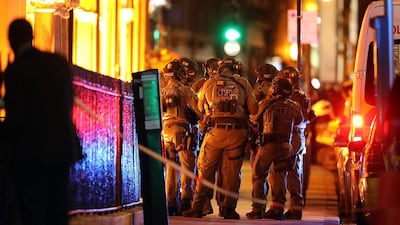British children are being targeted by a government security campaign which aims to educate them on how to behave in the event of a series of terrorist threats, including a marauding assault similar to that on London Bridge in June which resulted in eight deaths.
The campaign, which features age-specific materials, is being launched with a video which follows the experiences of three teenage friends caught up in a knife and gun attack on a shopping centre, and uses it to teach the best defence in such a scenario.
At the heart of the advice being promoted by the National Counter Terrorism Security Office is "RUN HIDE TELL". The film, which recounts the terrorist attack as a cartoon, shows the teens fleeing from the attackers before taking cover in the storeroom of a shop and awaiting rescue by the police.
The six-minute video warns against taking pictures during an incident and advises turning phones to silent when in hiding.
There is also advice about how to prevent attacks. The friends recall other events they had heard about, including spotting a suspicious person and telling police, or how someone had seen an unattended bag and had reported it.
“We knew we needed to educate a younger audience and we knew that if done correctly, this could be a campaign which will continue to keep people safe for decades to come,” said the Metropolitan Police deputy assistant commissioner Lucy D’Orsi, who is the national policing lead for protective security.
“We created this education piece with that aim in mind, to produce a generation of young people who not only would know exactly what to do in the unlikely event they were ever caught in gun or knife attack, but would pass that information on to others.”
Students will also be taught the "TREAT" element of the campaign, in which they will learn how to attend to victims of knife or gun attacks. This strand, developed in partnership with St John Ambulance, a first aid charity, teaches basic first aid training and also how to prioritise degrees of injury.
The lessons will not be mandatory in schools, but Ms D’Orsi hopes that the campaign will be widely spread. “I would strongly urge education providers and youth organisations to consider delivering this life-saving information to the 11-to-16-year-olds in their care,” Ms D’Orsi said.
"We appreciate this can be a difficult subject to speak to young people about, but we've carefully designed everything to be age-appropriate and we know from our research that this is information that young people want to be equipped with.”

